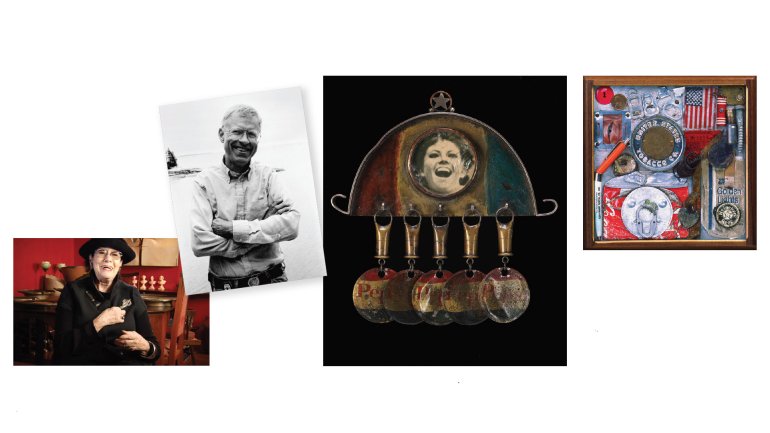Breaking Ground
Breaking Ground
J. Fred Woell: An American Vision
Film by Richard Kane with Robert Shetterly
$25 (home use)
Before J. Fred Woell came along, the value of a piece of jewelry was determined by the precious metals and gems used to make it. Woell turned that calculus on its head, creating remarkable brooches from found objects, taking the detritus of mass culture, and, as Glenn Adamson says in this excellent documentary, using it against itself. Instead of signaling status, Woell’s jewelry is democratic, narrative, and activist. It satirizes corporate branding and materialism and skewers a distinctly American drive to loot cultural and natural resources.
An American Vision traces his story from his inclusion in the 1962 “Young Americans” show and MFA studies at the University of Wisconsin to his years working at the Haystack Mountain School of Crafts, where he continued to make jewelry until his death in 2015.
Adamson calls Woell, elected to ACC’s College of Fellows in 1995, one of the most interesting jewelers who ever lived. Certainly, he was a remarkable technician with a singular creative voice. But the Woell you’ll fall in love with in this film is the self-effacing teacher, the gentle revolutionary, the man of integrity, humor, and humility. ~Monica Moses
Cræft: An Inquiry into the Origins and True Meaning of Traditional Crafts
By Alexander Langlands
W.W. Norton, $27
In the first chapter of Cræft, British historian, archaeologist, and television presenter Alexander Langlands lays out the lifestyle benefits of the handmade: “The goal, in being cræfty, is not to use as much as possible of the technology and resources you have at your disposal but to use as little as possible in relation to the job that needs undertaking.” Such an outlook, he argues, can help an individual live more fully in a world that values efficiency and prioritizes speed in accomplishing a task over the pleasure of performing it.
In the chapters that follow, Langlands recounts his adventures in working slowly. He clears a field at a rural cottage with a scythe instead of a gas-powered mower; working on a roof, he catches “the thatching bug.” Along the way, he takes engrossing detours into the history of various crafts and looks at how industrial society eventually overtook them.
Langlands acknowledges that he’ll be called an idealist. But idealism, he argues, is what is required to live “a mindful life achieved through beautiful simplicity.” ~Robert O’Connell
Radical Matter: Rethinking Materials for a Sustainable Future
By Kate Franklin and Caroline Till
Thames & Hudson, $50
Materials lie at the heart of craft. With increasing attention being paid to dwindling natural resources, it’s no wonder makers are searching not only for new materials, but also for ways to reuse old ones. “We are potentially on the brink of a materials revolution that could help rebalance our relationship with our planet and reshape society for the better,” say the authors, who run a research agency in sustainable design.
The book sees designers and makers as agents of change and highlights those who are taking a “better, smarter, more cyclical approach” in their use of materials. Divided into eight chapters, Radical Matter features artists who go beyond up cycling: Philip Ross, Sophia Wang, and Eddie Pavlu of San Francisco’s Mycoworks make a leather-like material from mushrooms, while Canadian Kelly Jazvac presents combinations of plastic and beach sediment as a “fossil of the future.” These artists reframe challenges as opportunities, problems as possibilities. As Maurizio Montalti of design studio Officina Corpuscoli puts it: “The best way to predict the future is to invent the future!” ~Alia Jeraj

